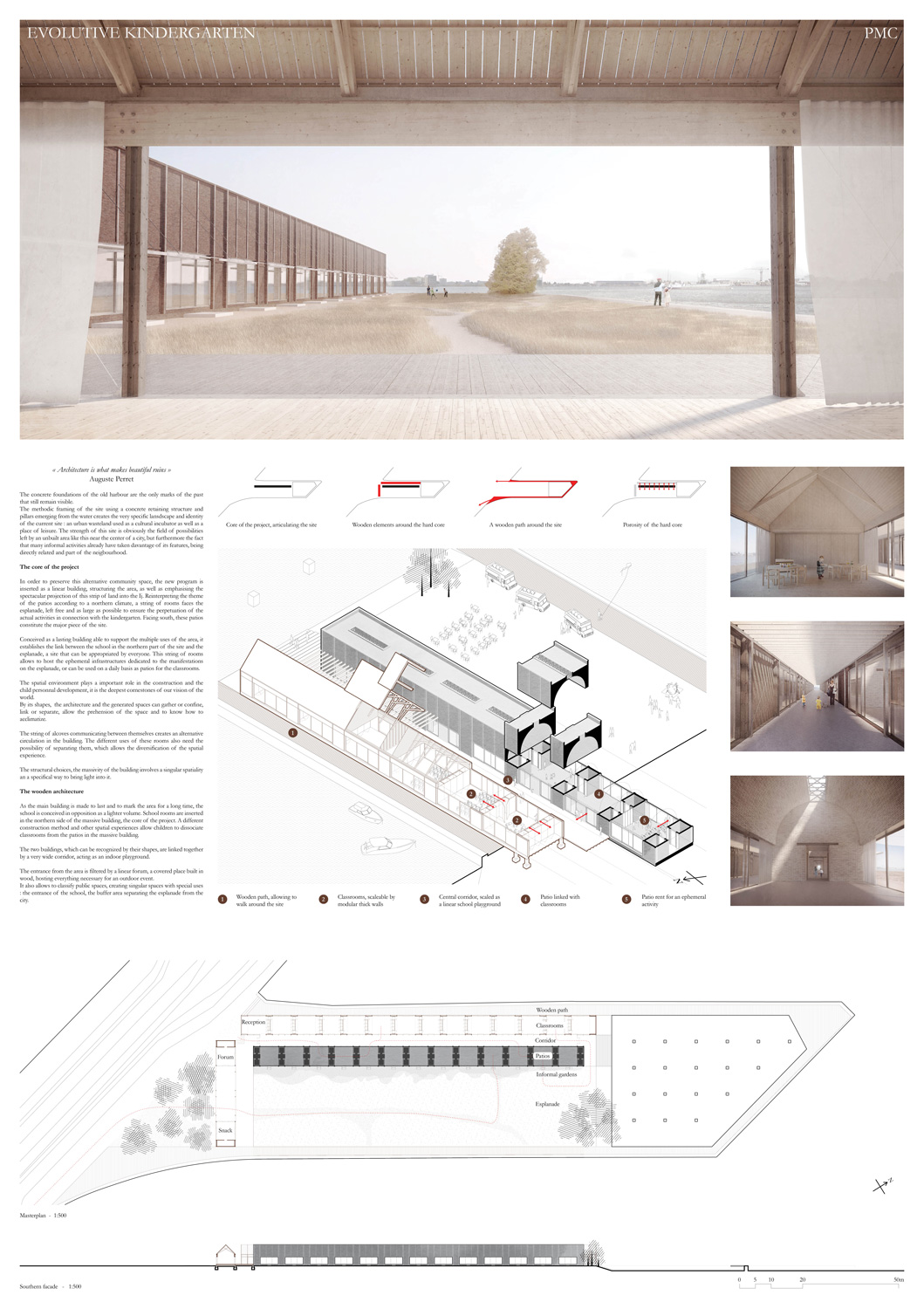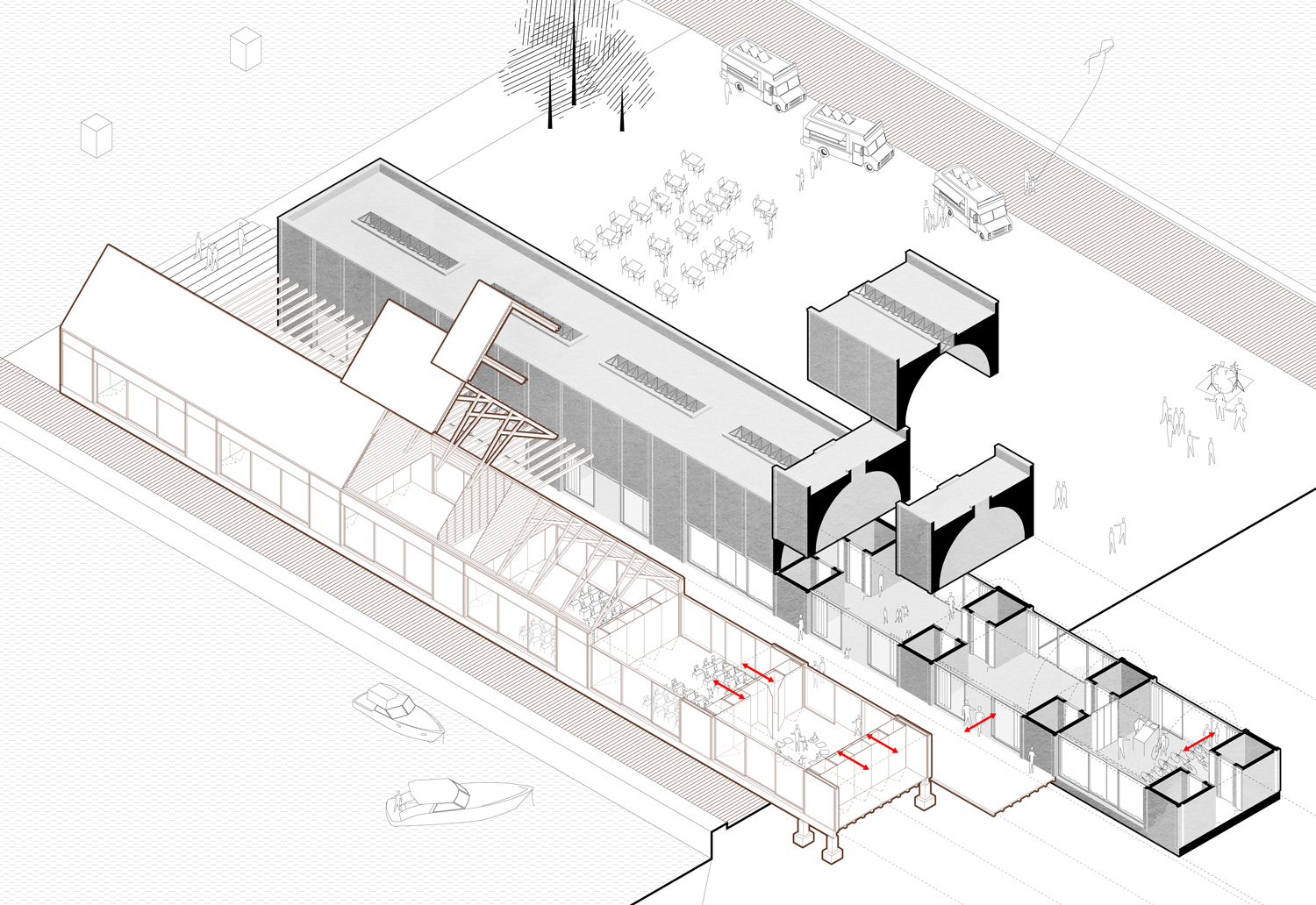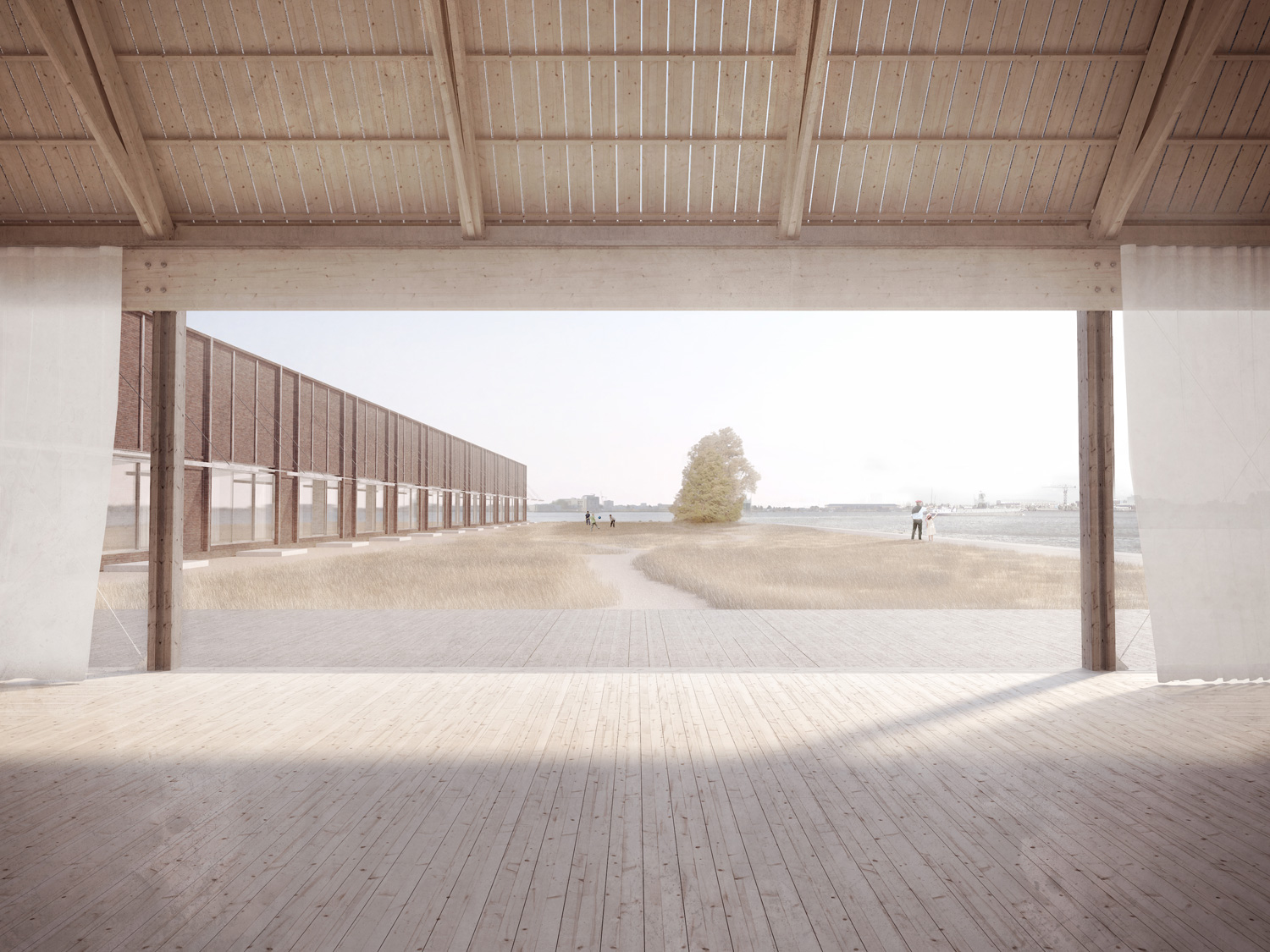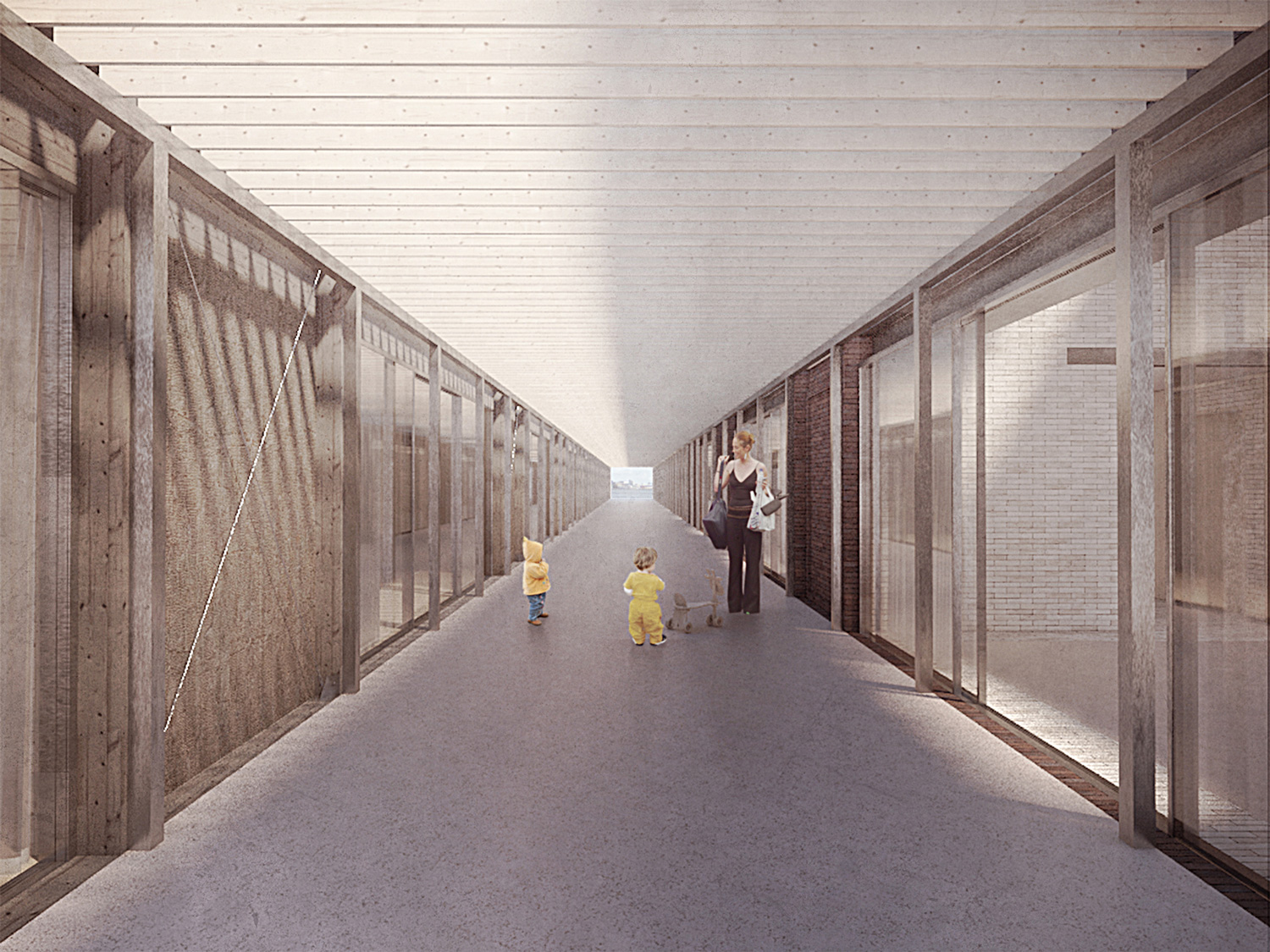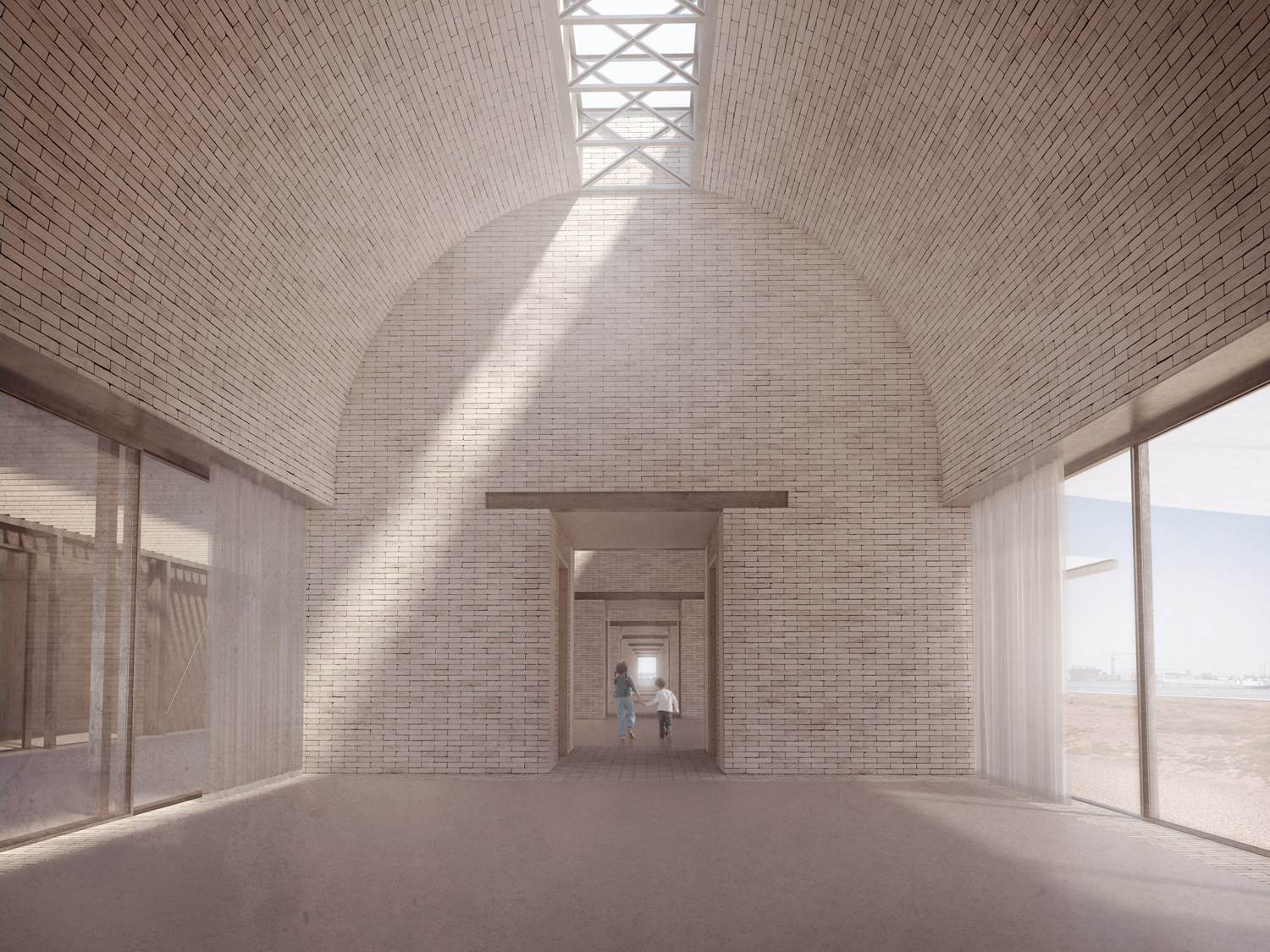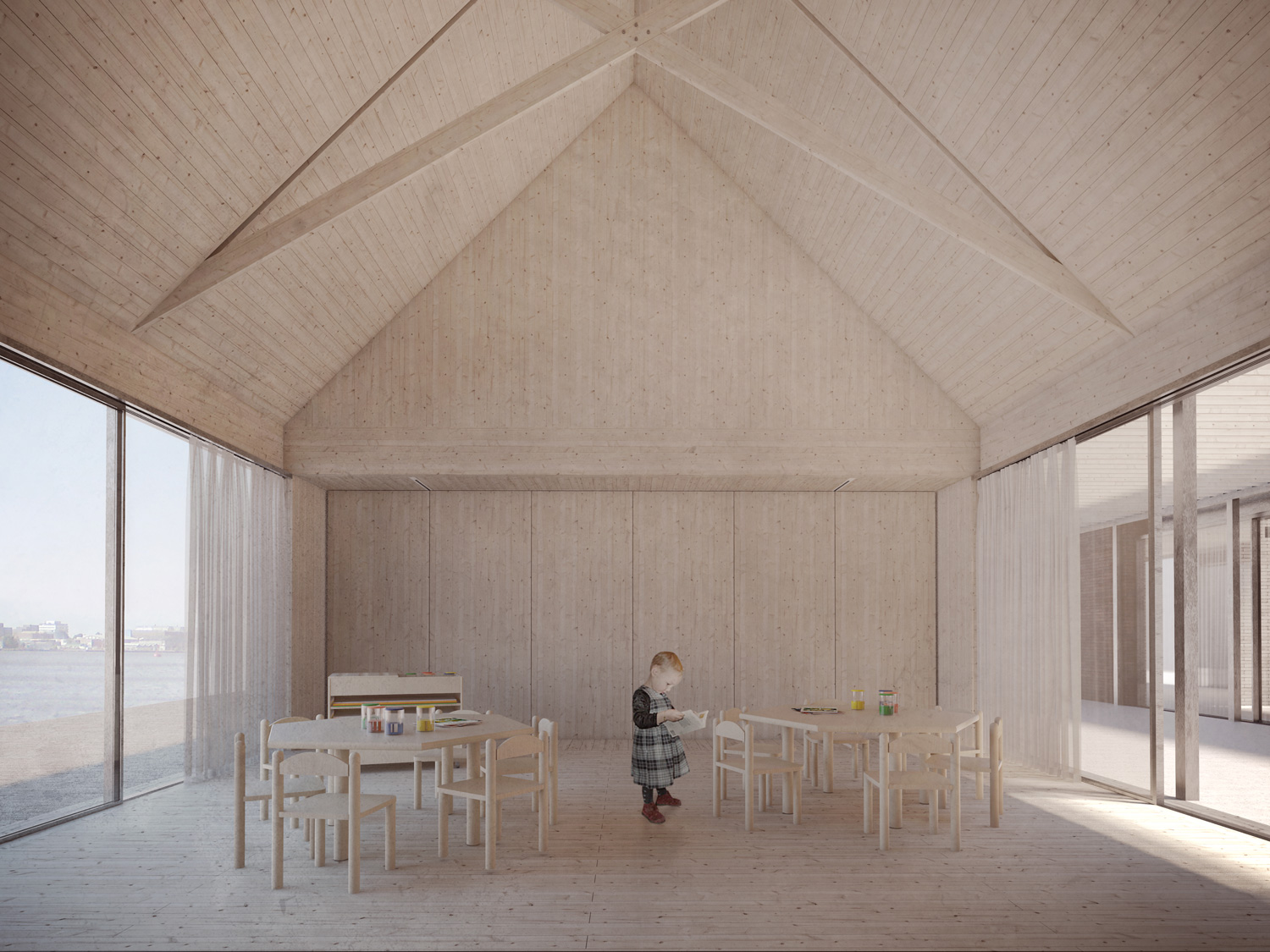☉ Amsterdam children's playschool is a winning proposal by Timothée Bossard and Achille Gauquelin for Archmedium in 2016. It is located in Amsterdam Netherlands in a seaside and urban setting. Its scale is medium. Key materials are brick and wood. Review the 19 proposals for the same competition.
« Architecture is what makes beautiful ruins » – Auguste Perret
The concrete foundations of the old harbour are the only marks of the past that still remain visible. The methodic framing of the site using a concrete retaining structure and pillars emerging from the water creates the very specific landscape and identity of the current site : an urban wasteland used as a cultural incubator as well as a place of leisure. The strength of this site is obviously the field of possibilities left by an unbuilt area like this near the center of a city, but furthermore the fact that many informal activities already have taken davantage of its features, being directly related and part of the neighborhood.
The core of the project
In order to preserve this alternative community space, the new program is inserted as a linear building, structuring the area, as well as emphasising the spectacular projection of this strip of land into the Ij. Reinterpreting the theme of the patios according to a northern climate, a string of rooms faces the esplanade, left free and as large as possible to ensure the perpetuation of the actual activities in connection with the kindergarten. Facing south, these patios constitute the major piece of the site.
Conceived as a lasting building able to support the multiple uses of the area, it establishes the link between the school in the northern part of the site and the esplanade, a site that can be appropriated by everyone. This string of rooms allows to host the ephemeral infrastructures dedicated to the manifestations on the esplanade, or can be used on a daily basis as patios for the classrooms.
The spatial environment plays a important role in the construction and the child personal development, it is the deepest cornerstones of our vision of the world. By its shapes, the architecture and the generated spaces can gather or confine, link or separate, allow the prehension of the space and to know how to acclimatize.
The string of alcoves communicating between themselves creates an alternative circulation in the building. The different uses of these rooms also need the possibility of separating them, which allows the diversification of the spatial experience.
The structural choices, the massively of the building involves a singular spatiality an a specifically way to bring light into it.
The wooden architecture
As the main building is made to last and to mark the area for a long time, the school is conceived in opposition as a lighter volume. School rooms are inserted in the northern side of the massive building, the core of the project. A different construction method and other spatial experiences allow children to dissociate classrooms from the patios in the massive building.
The two buildings, which can be recognised by their shapes, are linked together by a very wide corridor, acting as an indoor playground.
The entrance from the area is filtered by a linear forum, a covered place built in wood, hosting everything necessary for an outdoor event. It also allows to classify public spaces, creating singular spaces with special uses : the entrance of the school, the buffer area separating the esplanade from the city.
